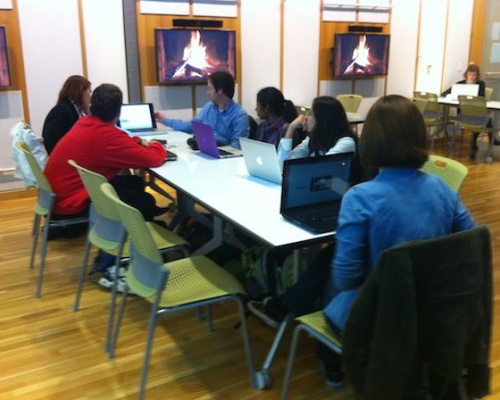The Secret Recipe for Sustainable Professional Learning Communities
Date
Categories
Creating and maintaining a professional learning community (PLC) requires knowing both its primary audience (e.g., who does this community serve?) and the content necessary to address their priorities (e.g., what challenges are they facing and solutions/resources are they seeking?). This requires a mix of expertise to tailor a successful and sustainable online community.
Some of the key ingredients are:
- Never stop publishing new content. Such as: blog posts, annotated research references, lesson examples, sample projects, exemplar unit plans, and self-guided short-form courses for refreshing skills and practices.
- Design for a specific audience. Do not attempt to be one-size-fits-all by building a PLC that addresses more than one core or primary audience.
- Promote and highlight. Instead of massively deep navigation menus, build a way to feature and encourage discovery. Encourage interaction through innovative design features that act as a simplified front-end to a large collection of material.
- Organize events and themes. Plan to offer webinars, live Q&A with recognized subject matter experts, and thematic content published throughout the year.
- Make it easy for participants. Invite participants to contribute to a conversation, rate a resource, offer feedback, and share what they’ve learned internally with the community and externally with peers. Integrate with common educator tools (e.g., Google, Edmodo, etc.).
- Offer tools to organize learning. Enable a set of features that allow participants to organize materials how they wish to learn and share. For example, allow participants to bookmark, favorite, rank, tag or export resources published within the community.
- Engage with participants. A community is defined by its people and the relationships they form. Actively monitor and contribute, facilitate, answer or comment on the conversations among participants within hours of an initial post. Knowing someone is there to listen and respond helps participants build confidence that the community is worth using regularly.
- Prime the conversation. Demonstrate how the PLC works by providing example content, discussions, and material that models the social norms your audience expects so that they are more comfortable contributing. In a group of strangers, no one wants to speak first; priming the conversation mitigates this.
- Train community moderators. Have clear expectations and processes in place to evaluate, mentor, and reward community moderators for creating, growing, and fostering participation in the community.

